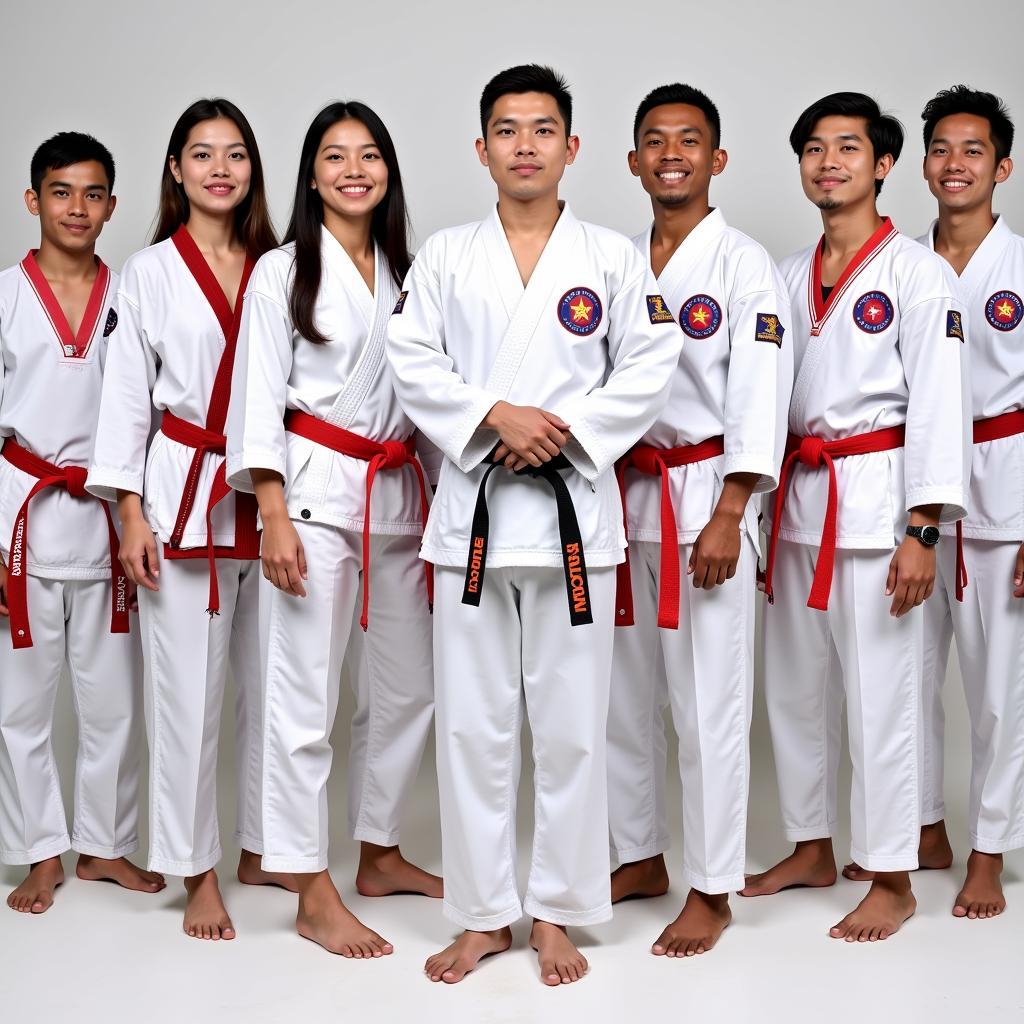Karate, a martial art originating from Okinawa, Japan, has gained immense popularity across Southeast Asia. With a growing number of practitioners in the ASEAN region, the demand for high-quality asean karate uniforms has also increased significantly. Choosing the correct uniform is essential, impacting both performance and comfort. This guide provides a comprehensive overview of everything you need to know about selecting the perfect karate gi.
Understanding ASEAN Karate Uniform Standards
Different karate styles prevalent in ASEAN countries, such as Shotokan, Goju-ryu, and Shito-ryu, may have specific requirements for uniforms. While the basic design remains consistent, variations in fabric weight, cut, and embroidery are common. Understanding these subtle differences is crucial in choosing an appropriate and respectful uniform. Factors like climate also play a role. Lighter weight gis are preferable in the tropical heat of countries like Thailand and Malaysia, while slightly heavier fabrics might be suitable for the cooler climates of northern Vietnam.
Key Features to Look for in ASEAN Karate Uniforms
Several essential factors determine the quality and suitability of a karate gi. The fabric, typically cotton or a cotton-polyester blend, should be durable enough to withstand rigorous training while allowing for breathability and comfort. The weave of the fabric affects its weight, stiffness, and shrinkage. A tighter weave generally means a heavier and more durable gi. The cut of the uniform also plays a vital role in movement and comfort. A gi that is too tight can restrict movement, while one that is too loose can be cumbersome.
Reinforced stitching in high-stress areas like the seams and cuffs ensures the gi’s longevity. Some uniforms also feature traditional drawstring closures, while others utilize elastic waistbands for added comfort. Embroidered patches or logos representing specific schools or organizations can add a personalized touch.
Choosing the Right Size and Fit
Proper sizing is essential for both comfort and performance. A well-fitting gi should allow for a full range of motion without being too baggy or restrictive. Size charts provided by manufacturers can help determine the correct size based on height and weight. However, considering the individual body type is crucial. For instance, someone with a broader build might need a larger size than someone of the same height and weight with a slimmer physique.
Care and Maintenance of Your Karate Uniform
Proper care and maintenance are essential for extending the life of your karate gi. Washing the uniform after each training session helps prevent the growth of bacteria and maintains hygiene. Using cold water and a mild detergent is recommended to avoid shrinking or damaging the fabric. Air drying is preferred to machine drying, which can cause excessive shrinkage and wear. Ironing the gi after washing helps maintain its crisp appearance and can also kill any remaining bacteria.
Finding Reputable Suppliers of ASEAN Karate Uniforms
Numerous suppliers offer karate uniforms in the ASEAN region, both online and in physical stores. Look for reputable suppliers who offer high-quality gis made from durable materials. Reading reviews and comparing prices can help you find the best deal.
“Choosing the right karate gi is an investment in your training,” says Master Kenzo Tanaka, a renowned karate instructor from Malaysia. “A well-made uniform not only enhances performance but also reflects respect for the art.”
ASEAN Karate Uniforms: A Symbol of Unity and Diversity
Beyond their practical function, karate uniforms also serve as a symbol of unity and diversity within the ASEAN karate community. Practitioners from different countries and styles come together, united by their passion for the martial art. The gi represents a shared commitment to discipline, respect, and the pursuit of excellence.
 ASEAN Karate Practitioners in Uniform
ASEAN Karate Practitioners in Uniform
“The karate gi is more than just clothing,” says Grandmaster Siti Nurhaliza, a prominent figure in the Indonesian karate scene. “It represents tradition, discipline, and the spirit of karate-do.”
Conclusion
Selecting the perfect asean karate uniforms involves careful consideration of various factors, including fabric, size, fit, and supplier reputation. By following the guidelines outlined in this article, you can choose a gi that not only meets your specific needs but also enhances your training experience and reflects your respect for the art. Remember, the right karate uniform is an investment in your journey as a martial artist.
FAQs
-
What is the best fabric for a karate gi in a tropical climate?
Lightweight cotton is often preferred in tropical climates due to its breathability. -
How often should I wash my karate gi?
Washing your gi after each training session is recommended for hygiene. -
Can I machine dry my karate gi?
Air drying is preferred to prevent shrinkage. -
Where can I find reputable suppliers of karate uniforms in ASEAN?
Look for online retailers and specialized martial arts stores in your region. -
What is the significance of the karate gi?
The gi represents tradition, discipline, and the spirit of karate-do. -
How do I choose the right size karate gi?
Refer to manufacturer size charts and consider your individual body type. -
What are the different types of karate gi weaves?
Common weaves include single, double, and triple weave, each offering different levels of weight and durability.
Need More Help?
For further assistance with choosing your ASEAN karate uniform, please contact us.
Phone: 0369020373
Email: [email protected]
Address: Thon Ngoc Lien, Hiep Hoa, Bac Giang, Vietnam.
We have a 24/7 customer support team ready to assist you.

